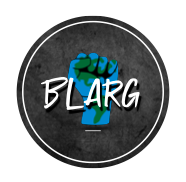BLARG FAQs
-
BLARG is the Brookhaven Landfill Action and Remediation Group, a community formed in support of and a part of a direct action plan to protect Black lives of the people in North Bellport, N.Y., after the murder of George Floyd in 2020. BLARG recognizes the environmental racism and injustices forced on the diverse North Bellport community as a form of violence against Black people and other underserved groups—including the Indigenous and Latinx peoples—who live there.
-
“Environmental racism is the disproportionate impact of environmental hazards on people of color. Environmental justice is the movement's response to environmental racism….
…‘Environmental equity’ is not environmental justice. ‘Environmental equity" is the government's response to the demands of the environmental justice movement. Government agencies, like the EPA, have been co-opting the movement by redefining environmental justice as ‘fair treatment and meaningful involvement,’ something they consistently fail to accomplish, but which also falls far short of the environmental justice vision. The environmental justice movement isn't seeking to simply redistribute environmental harms, but to abolish them.” — EJNET.org
The serious burdens of polluting infrastructure and activities are not evenly shared among people in the United States. This includes North Bellport, NY, a predominantly Black, Indigenous, and Latinx community that has been disproportionately targeted by industrial development of all kinds and is most proximate to Long Island’s largest operating landfill—the Brookhaven Landfill. Long underserved racialized groups, especially Black communities, and low-income people are most commonly forced to face such environmental injustice, which has profound effects on people’s health and quality of life.
Many studies have exposed the vast differences in harm from industrial pollution of all kinds to air, land, and water in communities housing underserved groups versus white, wealthier communities that are less likely to be targeted by industries. For example, people living in predominantly Black communities suffer greater risk of premature death from particulate air pollution like that emitted by the diesel trash trucks constantly moving in and out of North Bellport to the Brookhaven Landfill than those who live in communities that are predominately white. Black communities are among the most exposed to harmful pollution due to decades of residential segregation that has facilitated unjust expansion of deadly industries into underserved areas.
-
The Brookhaven Landfill:
The Brookhaven Landfill is located in Yaphank, Suffolk County, New York, most proximate to the hamlet of North Bellport and is operated by Brookhaven Town. The landfill opened in March 1974, with six cells. Four of these cells previously accepting municipal solid waste have been permanently closed, but these cells have been found to be leaching chemicals into groundwater. The landfill stopped accepting municipal solid waste in 1990 but this has not stopped pollution. Part of the landfill is still currently active and is accepting construction and demolition debris and toxic incinerator ash, causing more groundwater and air pollution—including noxious odors. The landfill has a gas collection system for methane and other gases and a permanent flare, releasing climate-warming greenhouse gases. While the landfill is directed for closure in 2024, the Town has not publicly released a plan outlining how this will happen, nor how the landfill pollution concerns will be addressed.
Proposed Waste-By-Rail Hub:
Winter Bros has proposed a recently expanded facility to process at least 41 tons of waste per month in Yaphank, a project greenlighted in April 2023 by the Town of Brookhaven.
Warehouse Construction:
AIREF, a real-estate trust, has targeted North Bellport for the site of a massive logistics center.
Broken Systems:
• Town of Brookhaven fails to address North Bellport community’s concerns.
• Stakeholders on varying levels drive injustice in North Bellport.
• Waste crisis on Long Island.
• Lack of focus on nontoxic, regenerative, zero-waste, justice-centered solutions.
-
• Water contamination: PFAS, nitrogen, iron, and other pollutants
• Air pollution/noxious odors
• Land development
• Noise pollution
• Health issues
• Cumulative impacts to community
Community Health Concerns:
North Bellport is counted as the census tract with the lowest life expectancy on Long Island at 73.2 years (this is across Nassau/Suffolk Counties combined).
North Bellport has the 2nd highest asthma ER visits in Suffolk County for all ages and the third-highest number of emergency visits for children under the age of 4.
North Bellport, Bellport, Gordon Heights, and Medford have a “high” level of social vulnerability as assessed by the Center for Disease Control (“CDC”) and Agency for Toxic Substances and Disease (“ATSDR”), indicating that these communities are exceptionally vulnerable to external stresses on human health.
If you look at the federal Environmental Justice Screening and Mapping Tool, parts of the North Bellport community are in 80th percentile nationally for the EPA’s EJ Index diesel particulate matter. Diesel particulate matter are tiny particles that can embed themselves deep in lung tissue, contributing to a range of serious health problems, from heart and lung disease, lung cancer, as well as irritation to the eyes, throat, and nose. Children are especially vulnerable to these effects.
-
BLARG calls for:
Immediate ACTION to close the Brookhaven Landfill. Closed means closed.
Remediation of longstanding air, soil, and water pollution. BLARG acknowledges that the land the community seeks to remediate is on the sovereign land of the Unkechaug Nation.
BLARG supports direct efforts to attain environmental justice in the North Bellport community as well as large-scale systemic solutions to the waste crisis. This includes a local and regional waste plan that is equitable, regional, sustainable, measurable, transparent and public.scription
